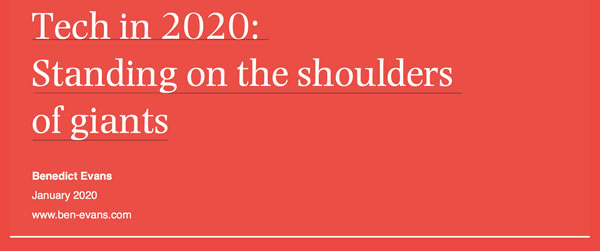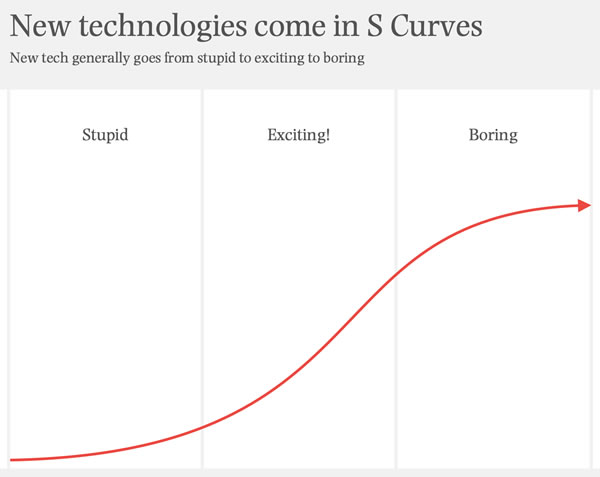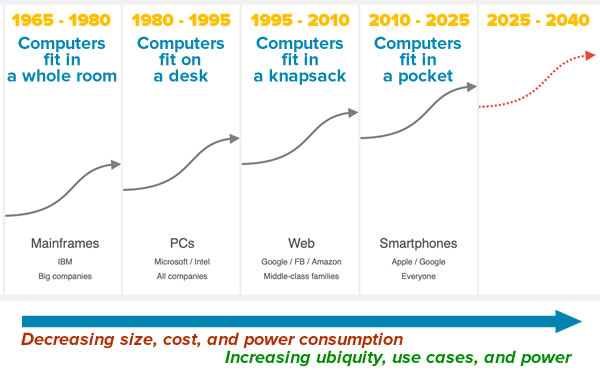If you read only one piece of tech punditry today, make sure it’s Benedict Evans’ slide deck, Tech in 2020: Standing on the shoulders of giants. Evans is a partner at Andreesen Horowitz (a.k.a. a16z), and it’s his job to try and figure out where tech is going next. Despite being 128 slides long, the deck is a quick read thanks to Evans’ concise slide-making style. More importantly: There’s a lot of useful information in them! I’m going to spend this week highlighting some key lessons from this deck.
Today’s lesson: Always bet on the toy.
The S-curve is a recurring image in Evans’ slide deck. S-curves describe a process that starts off slowly, picks up speed in the middle, and slows down near the end. It describes a non-linear growth process that you’ll see everywhere, in both natural and artificial systems.
Evans observes that the adoption of new technologies tends to follow an S-curve. In the beginning, a new technology’s adoption is slow, as it’s considered too silly or toy-like to actually be useful. Then it hits a tipping point where it becomes the hot new thing, and adoption ramps up quickly. Finally, the market for the technology becomes saturated, growth slows, it becomes “old news”, and people ask “What’s next?”.
Consider desktop computing. When it got started in the late 1970s and early 1980s, desktop computers were derided as toys. The fact that the IBM PC was developed by IBM’s Entry-Level Systems division indicates that they thought of the PC was something to tide their lightweight customers over until they were ready for a real computer. We know what happened in the end: people in offices found all sorts of uses for PCs, they became ubiquitous, and now they’re boring.
On slide 7, Evans points out that the history of computing technology has been a series of S-curves, with each S-curve spanning a period of about 15 years. The image above shows slide 7, with annotations that I added to spell out the overall trend. With each technology, the following happens:
- Size, cost and power consumption decrease
- Ubiquity, use cases, and power increase
With that in mind, Evans presents four major categories of what could be “The Next Big Thing”, which are:
- Frontier tech
- Quantum computing
- New battery chemistry
- Neural interfaces
- Autonomy
- AR optics
- Important but narrow
- Drones
- IoT
- Voice
- Wearables
- Robotics
- eSports
- 3D printing
- VR
- Micro-satellites
- Structural learning
- Crypto?
- 3G / 4G / 5G
- Cloud, still
- The next platform?
- AR glasses?
Note that all of these technologies are easily dismissable as “toys”, “silly”, or “not yet ready for the real world” — for now. If you want to be ready for the upcoming 15-year S-curve, make sure that you’re keeping an eye on trends in these areas, or similar topics.



